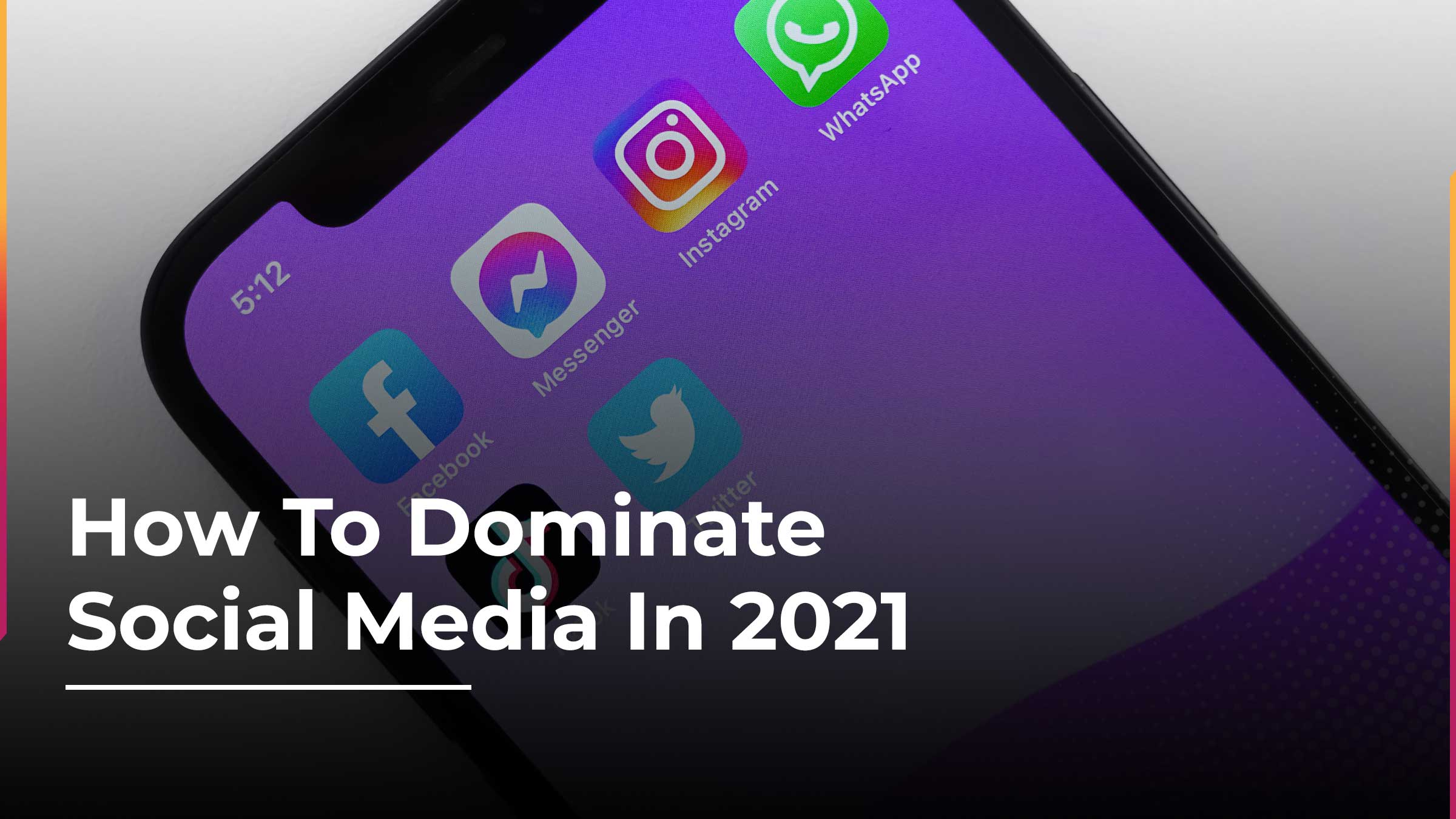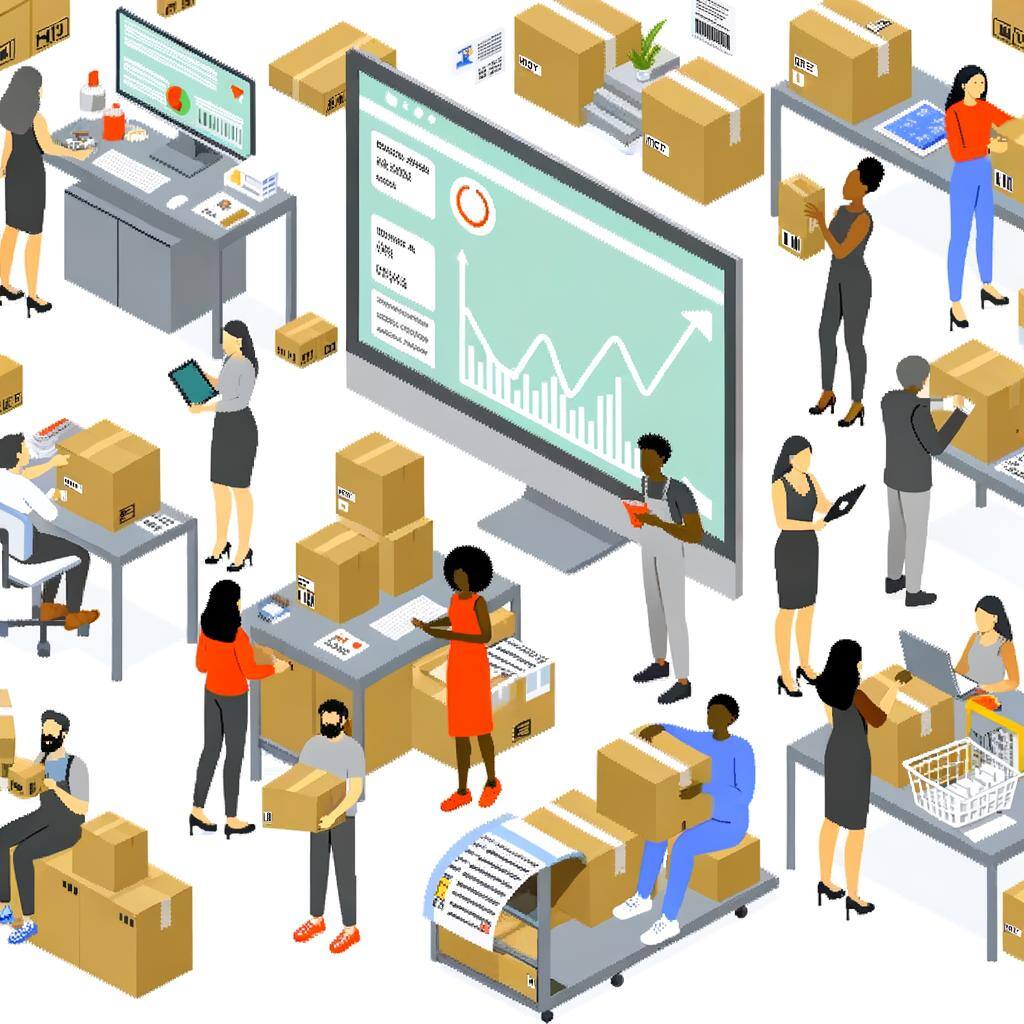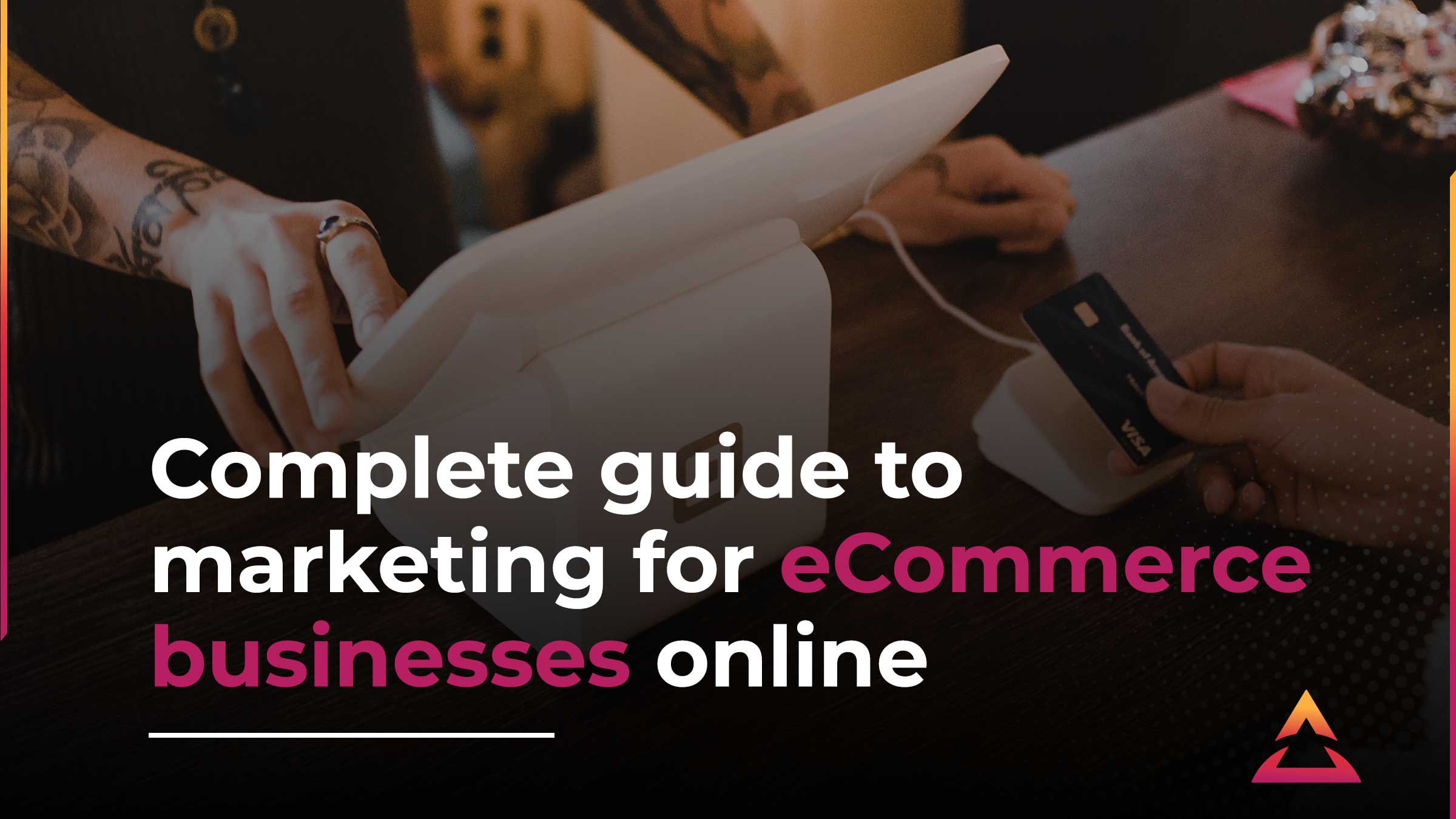The Ultimate Social Media Playbook For Business Owners
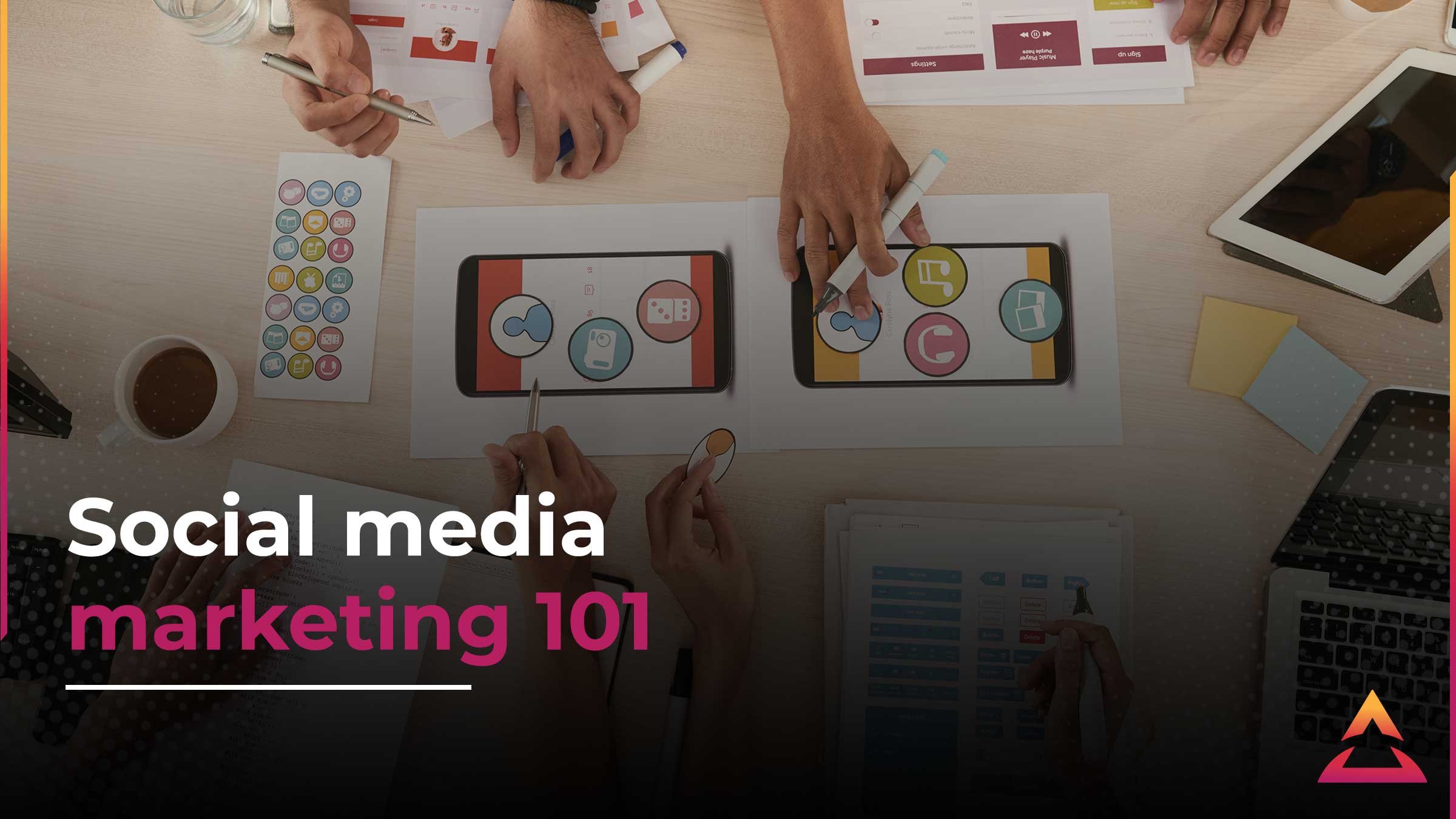
There is not a rock you can hide under to have not heard about Social Media. Funny videos on YouTube, baby photos on Facebook, influencers on Instagram, or the Twitter tweets that bombard you, social media is the #1 way to connect around the world.
But what does that mean for you as a business owner? Social media for business is a pretty big deal. How important is it for your business? How can you utilise it in your marketing strategy? And how do you create a social media content plan?
At The Entourage, we empower business owners everywhere by giving them everything they need to build great businesses and live meaningful lives, and this is just a taste of that. Social media is the most powerful and wonderful tool you have to share your business with the world - but it can also be bewildering. We're here to demystify it for you.
Let’s go.
Contents:
The Ultimate Social Media Playbook For Business Owners:
- Why does my business need a social media presence?
- What are the top social media channels to market with?
- What content should you post on social media and how often?
- Create a social media marketing calendar
- Key takeaways
Why does my business need a social media presence?
Social media is where the majority of your customers are at. Data from Data Reportal and Genroe shows us that:
- Australia’s population is at 25.6 million in Jan 2021
- There are 20.5 million Australian social media users in Jan 2021 (That's just under 80% of Australia’s population)
- And the average Australian social media user spends 1 hour 46 minutes on social media a day
With access to potentially 80% of the Australian population, this is THE biggest opportunity your business has today to reach new customers. And with social media being essentially free to use, it's a no-brainer on why you should be using social media for business.
Whether you're a local plumber, a property developer, a recruiter, or in hospitality and retail, every single business owner could benefit from using social media. The only question is: which channels should you be using, and what content should you be creating and posting?
*A note that while social media is free to use, one big cost of social media would be your time. It can be a real-time sink, getting involved in community conversations, content creation, obsessing over your likes and shares. So keep this in mind. The other main cost would be the paid side of social media which we'll cover below.
What are the top social media channels to market with?
There are so many social media channels, all with different purposes and audiences, so which one should you focus on?
As there are different purposes and audiences in each platform, the answer is that it depends. It depends on what your target market is, what your business goals are currently, what product or service you sell, and the type of content you want to create (which we will get into in the next section too).
To get you across the demographics and purposes of the current top 6 social media platforms, in no particular order, here are some pros and cons about marketing with each of these platforms, and some examples of how they can be used.
For the paid advertising side of each social media platform, each has different capabilities in its reach and targeting, which is why we've also included the differences on the paid side below too. If you want to get down into further detail of optimising your digital marketing across your channels including socials, check out our blog on how you can optimise your digital marketing here.
- Over 10 million Australian users of Instagram with 56.4% being women
- The largest demographic are people aged 25-34
- It's a very visual platform mainly made up of images and shorter-form videos
Pros
- Multiple avenues to be found by new customers
- Instagram has an explore page filled with a person's interests (based on their past engagement on the platform) with accounts that person doesn't follow
- Users can use hashtags or geotags to find new content and accounts
- There's the opportunity for paid partnerships or joint ventures that can be tagged through Instagram, promoting each other's accounts and/or products and service, increasing the count of their respective Instagram followers as a result.
- Easy way to showcase your product or represent your service through visual content
- Most content is uploaded by real people, so while your content does need to look good, it doesn't need to be fancy
- Easy opportunities to sell (especially for e-commerce stores)
- Instagram allows you to easily turn posts into promoted business posts
- You can even create a shop in Instagram and just add a simple CTA (Call-To-Action) button for people to shop on-site
- Ease of two-way communication with your audience
- Instagram makes it easy to chat with your followers in posts and especially in Stories through features called "Stickers" where you can put up a poll, ask questions, or more
- Ability to dive into the analytics of your followers
- Using a business account on Instagram, you're able to see the demographics of your audience as well as the type of content they're engaging with on your profile
- On individual posts, you can see the likes, comments, shares, saves, and impressions that you've received, and use this information to compare with other posts to see what type of content resonates the best with your audience
- Paid — detailed targeting of users
- As it is powered by Facebook, you can get some fine details about your target audience including age, locations, interests, and customer lists as well
Cons
- With millions of users on Instagram, like many other platforms, it is harder and harder to cut through the noise
- "Organic reach", or non-paid reach of your content, is something you will hear a lot of people talk about when it comes to social media, and the fact that it is in decline
- The more people use these platforms, the more content there will be, and the harder it is to stand out
- As Instagram is a visual medium, it can take time and resources to figure out what content resonates with your audience, while looking good
- Visual representation works better, especially videos, which will, however, end up taking the most time and resources to make
- Hard to click on links in Instagram
- Unlike most platforms, you can't put links in posts on Instagram — the only way to get people to click through to links is through your bio or stories
- Paid — limited audience
- Lots of users, however, the age range is narrow - 18-24, and the targeting for paid overall, is limited compared to Facebook
- Over 16.5 million monthly users with 53.3% being women
- 25-39 age group is the largest at 6.1 million monthly users
- A platform for communication, talking to and with your customer, done with visual content mainly
Pros
- With the sheer number of users, your potential reach is incredible
- Facebook focuses on building communities, so communication with and between your audience is highly encouraged
- Facebook groups are one of the highest pushed types of content in an individual's feed, and one of the biggest opportunities for businesses to utilise
- Massive opportunity with the chat function for business owners
- As community is a function that's pushed in Facebook, talking directly with your customers is encouraged, especially through chat - important to get your community management in your business right
- You have the ability to automate chat through chatbots where you can nurture and sell to your customers
- Great detail of analytics available to review content
- On your business account, you are able to see the demographics of your audience as well as likes, shares, comments, follows, and video views
- Using your Creator Studio, you can compare the engagement of your content further as well as schedule your content natively on Facebook (and Instagram)
- Paid — Facebook is the number 1 platform for highly targeted advertising
- There are lots of options within Facebook for advertising from a coordinated marketing campaign, just one ad, video ads, carousels, and more
- The data Facebook has on its users is phenomenal (although with the new Apple iOS update, there are limitations being introduced)
- This gives you the ability to micro-target your audience for paid marketing
- You can choose your advertising goals based on whichever stage of the customer journey you want to target for a specific campaign
- There is the ability to retarget those who have watched parts of your videos too to create an even more engaged (or warmer) audience
Cons
- Less organic reach
- The organic reach of Facebook ads is lucky to be 1% of users
- This means you have to spend money to reach even a small amount of people, including your own audience
- As with Instagram, it will take lots of time and resources to increase content to reach more people
- And while it's possible to post the same posts from Instagram across to Facebook, your audience may not always resonate the same across two different platforms (important to test!)
- Paid — variable costs
- If you don’t set a budget, Facebook is quite likely to just keep charging you and charging you
- Even if you have a budget, the more budget you have, the more results you will be able to get, making it very easy to spend a lot of money on Facebook advertising alone
- Important to keep a close eye on your ads and constantly test
- Over 12.4 million users in Australia making up 47.7% of the Australian population
- The main users are aged 25-34, making up 57.5% of total users
- The platform is mainly used on a more professional capacity than the other platforms, speaking to professionals by professionals through a range of content
Pros
- Very strong thought leadership opportunities
- LinkedIn is all about educational content relating to professionals, the workforce, careers, etc.
- A lot of focus on community, similar to Facebook, with a higher amount of text posts from top users (such as utilising LinkedIn articles)
- More people following brands who are thought leaders here than on other platforms
- More opportunity to talk about your company's culture and improve your recruitment piece here
- Higher organic reach compared to Facebook and Instagram
- Meaning more opportunity to reach more people and grow your brand on LinkedIn
- LinkedIn audience is more open to DM's and connections from personal brands on LinkedIn compared to some other platforms
- More opportunity to talk directly with your audience and nurture them
- Paid — incredible targeting opportunities
- The metrics for LinkedIn targeting can be specified to things like Employer, Job Title, Education Level, Industry, and Professional Qualifications
- LinkedIn Conversations allows you to send ads as messages directly to people
Cons
- Very easy to fall into the trap of cliched content
- Important to distinguish your Unique Selling Proposition (USP) and overall educational value that you can provide rather than following what might work for others that might not be relevant to your brand
- Like all other platforms, takes time to build thought leadership and become a leader on LinkedIn
- Not always suitable for every single type of business to put lots of time and energy on this - just think, are your users prevalent on this platform?
- Paid — not as sophisticated of a platform compared to Facebook
- A clunky user interface that is not intuitive and a little awkward meaning getting good ad content onto LinkedIn can be a challenge
- It has poor reporting and while it is improving, LinkedIn’s reporting dashboard is not as comprehensive as it should be
- You must have a minimum spend to advertise, and while it isn’t much, it is still a consideration and a part of your budget
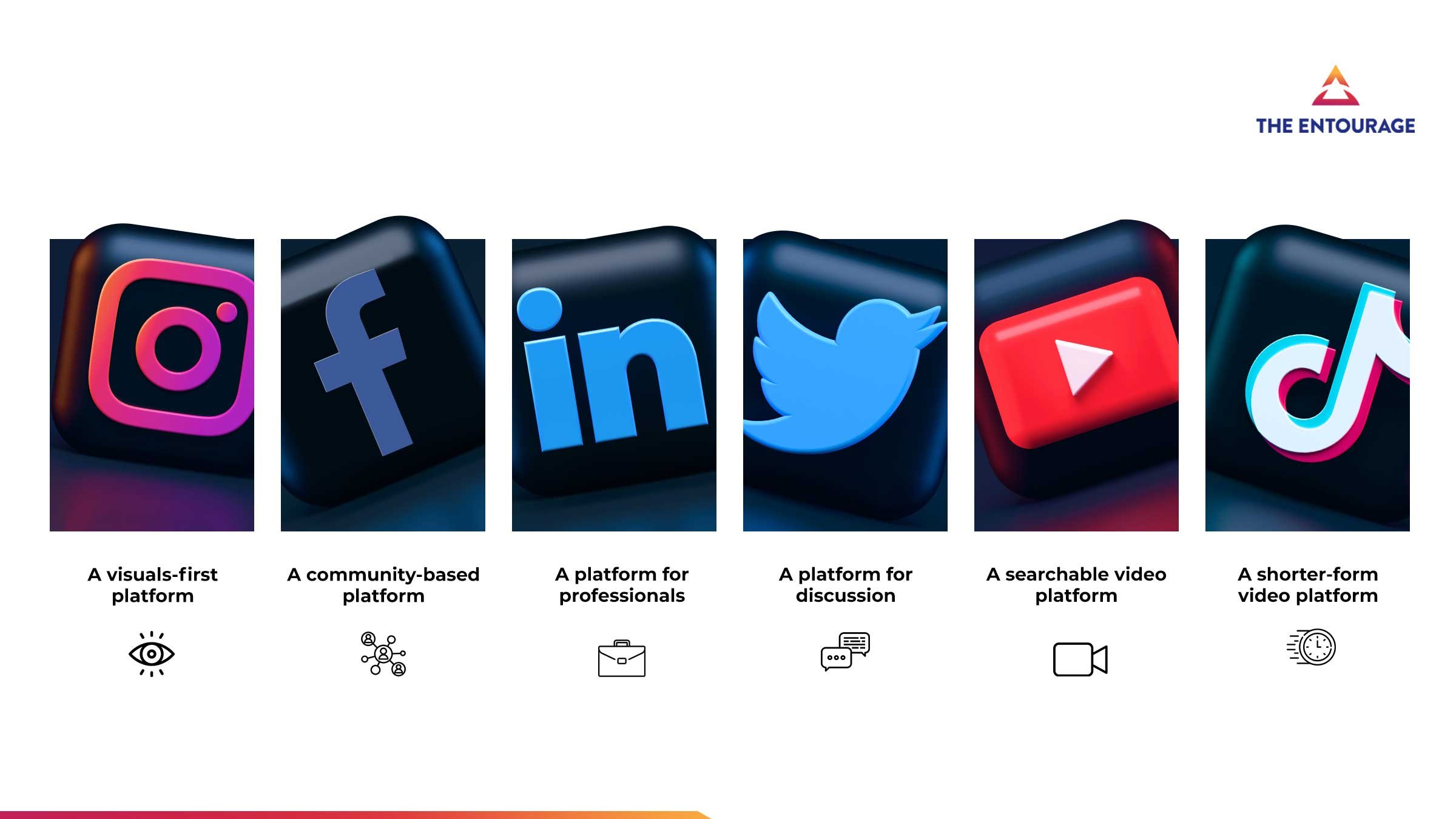
- 192 million global daily users with 66% of its demographic made up of males
- 63% of worldwide users are aged between 35-65
- The platform is mainly used for discussion or communication with the main content type being text-based only
Pros
- Great opportunity to engage users and your target audience
- With 192 million daily users, you can reach many of these people through targeted or trending hashtags very easily
- While hashtags work all over the social media landscape, they are best known for on Twitter - find the right hashtag and you reach a huge audience
- Similar to LinkedIn, allows you to become a thought leader to those who resonate with your content, especially through trending hashtags and topics
- And allows you to talk directly back to your consumers and audience on a public platform
- Similar to Facebook, you can schedule your Tweets
- A feature of Twitter is that you can create a load of content and schedule them out ahead of time (however, still recommended to keep in touch with trending topics and post when appropriate)
- You can schedule images and videos as well on Twitter
- Paid — multiple kinds of ads
- Promoted Tweets get pushed to your target audience
- Businesses can promote trends
Cons
- A lot of noise on Twitter making it hard to cut through
- Easier if you have an established brand that people want to hear from
- Hard to convert users into customers through Twitter alone
- Important to be posting Tweets frequently to stay relevant
- Paid — costs can be high with not as many results
- The costs are high when compared to other social media platforms
- Too much advertising and promoting can make you seem like a spammer, a hard tag to get rid of
YouTube
- 2.3 billion monthly users worldwide
- The 2nd most popular Social Media Platform after Facebook
- Mainly used as a long-form video platform to search for educational pieces or to be entertained as the 2nd most popular search engine after Google (Google owns YouTube)
Pros
- Great opportunity to put faces behind the brand and really showcase your brand
- Help reinforce your brand through logos and visuals
- Ability to talk directly and at length about the problems that your customers may face
- Also able to talk about product or service features
- An easy-to-use platform for scheduling and uploading content and includes many other features
- Tools to link to your website with CTA's that come up during the video
- Tools to suggest more of your YouTube content to viewers
- No video length cap
- You can upload a video of any length, free of charge
- Of course, if you’re advertising, 2 minutes is about the right length
- Searchable platform meaning you can utilise and optimise your SEO
- Great opportunity for reaching new people with relevant content
- Paid — options for you to monetise your own videos as well as pay for your content to be seen on others' accounts
- Options for shorter, non-skippable ads, or longer, skippable ads
- Can come up before a video or during a video
- Able to tell a lot more in video ads than image only ads
Cons
- There's lots of content on YouTube already meaning it's hard to rank (similar to Google)
- Similar to Google, you'll need to put in a lot of time and resources into a YouTube content and SEO strategy
- Negative ratings on YouTube can hurt and affect your video's ranking
- YouTube has a rating system in place
- Paid — can get blocked by Ad Blockers in place
TikTok
- 2.5 million Australian users
- Launched in 2018, it's the fastest growing social media platform with a 50% increase in users in 2020 alone
- The biggest opportunity for creators right now and is mainly used for video-only, music-based, educational and entertaining content
Pros
- Biggest growing social media platform right now with lots of organic reach
- Lots of organic reach means more opportunity for your brand to be seen
- Easier to get viral content than other platforms
- Lots of #'s and trends that you can jump into
- Gives you easy content ideas to utilise if relevant to your brand and business
- Easy for people to search for relevant content
- Their algorithm on their version of an explore page, the For You Page, is targeted to how and what an individual engages in meaning your content is likely to be served to relevant people organically
- Paid — really cheap costs right now
- Great for brand awareness especially for local audiences
- Lighter budget means you can work with more
Cons
- Young demographic
- Although it is a growing platform, it does have a very young demographic and may not all be ready for purchasing decisions (however, this platform should not be discounted)
- Difficulty converting users into paying customers
- Should be used as brand awareness and behind-the-scenes of your business rather than conversion targeted content
- This means that your ROI will be harder to calculate from TikTok
- Hard to capture lots of information in short videos
- With 60 seconds being the maximum length of a video, there will need to be lots of editing involved (although can be done on the platform - and encouraged)
- Needs to be matched to (and should be) to trending sounds meaning ensuring you know how a trending sound is being used and matching it to your video and its transitions
- Very particular style of editing on most TikToks so will need to familiarise yourself with it first
- Paid — the most limited targeting out of all the platforms
- Very basic details to target people with and should mainly be used as a brand awareness tool rather than conversions
Data collected from
What content should you post on social media and how often?
So now you know which platform might benefit your type of business, and how you could start using it. But then, what content should you post on social media, and how often? These are the big questions.
With how often, the answer for all the platforms is, it depends.
It depends on your audience, the times in the day that they're online and engaged, how often they want to see your content, and especially, what capacity are you to produce enough content to be posting frequently. If you aren't able to produce enough content to post once a day or multiple times a day, then don't — but be consistent be how frequently you do post. Consistency is the key.
And in terms of what content to post, you want to be posting content that markets you and your business in a way that appeals to customers along their customer journey with you, but you don’t want to drive away potential customers by overloading them with content that doesn't resonate with them.
So, what should you do? Let's dive back in to see what type of content performs better on which platforms.
Have a listen to our podcast - the #1 social media marketing content checklist with Heather Porter to get some more insights on how to best optimise your social media content.
It's important that on Instagram, you understand who your target audience is, as well as the fact that it is a visual medium, before tailoring your content accordingly. Check out our podcast, The Make It Happen Show to get some detailed Instagram tips with industry expert, Rita Agoulian.
Instagram is a discovery platform meaning that most people won't search for the specific content you post, they'll discover it. That means your content must be 'thumb-stopping', or disrupt their scroll enough for them to be interested in the content itself, then to go onto your profile. If they resonate with it, they'll likely follow you. That's why it's important to be sure of who you want to be targeting on Instagram to ensure your content talks to that person and on a consistent basis.
The types of content you can post on Instagram include straight-up images, videos up to 10 minutes or shorter form videos up to 30 seconds (Reels). You can do carousels (multiple images or videos or both in one post) as well as go Live to your audience directly. A mix of different types of content will help get the personality of your company and what you’re trying to market across from multiple angles.
There are also Stories that you can post on your profile that disappear after 24 hours. They can be a mix of videos or images as well and are a great way to engage your audience directly. Here, you can add animations, sound bytes, gifs, and stickers to your videos and more, to make your content POP.
One of our podcast episodes of The Make It Happen Show covers exactly what the top strategies are for Instagram marketing in 2021 are to blast your Instagram to the skies.
As always, it's important to test to see what works content-wise and frequency-wise for your audience and consistently be looking at your analytics and reviewing it. With Instagram's Feed algorithm, it's important to not overpost on Instagram per day as it could drive your audience away.
Facebook is very similar to Instagram (being owned by the same company helps), and it is huge and diverse. It can be conversational, or it can be a great place to share cool stuff. Catch someone’s eye, grab their interest, and they will share your content.
Remember that just like Instagram, it's a discovery platform first. However, unlike Instagram, it's harder to find new pages and accounts to follow. This means that you need to focus on building a community that will share your content. When it comes to your content, ask yourself, is this something that I would personally share on my own account? Speak to people. Emotional language and content that is 'shareable' are what helps you get viral on Facebook.
The types of content you can post on Instagram include text posts, images, carousels, videos up to 240 minutes, and stories similar to Instagram. You have the ability to go Live on Facebook as well to speak directly with your Facebook community.
There are no hard limits to how often you post on Facebook, especially as Page's feeds are often not prioritised on Facebook Feeds. However, with paid, make sure that you don’t flood all of your audience’s walls with your advertising content. They could become numb to your message or actively click away from you.
Interested in learning more about how to take your business' Facebook marketing strategy to the next level? Let us show you how.
The first thing that you need to remember is that LinkedIn is a professional social media platform, so your content is speaking to professionals, to businesses. You have a mix of B2C and B2B communication which is unique amongst all other social media platforms.
Understand if you’re marketing to people or businesses when you create your content, and customise the language appropriately. Think about what would you want to hear from a business, what types of content would make you resonate with a company? Is it the philanthropic causes they back? Or is it how they look after their employees? Do they care about the environment? Do they have a loyalty or rewards program for their customers? Do you learn from them about what their expertise is in? How can you replicate those same elements in your LinkedIn content strategy?
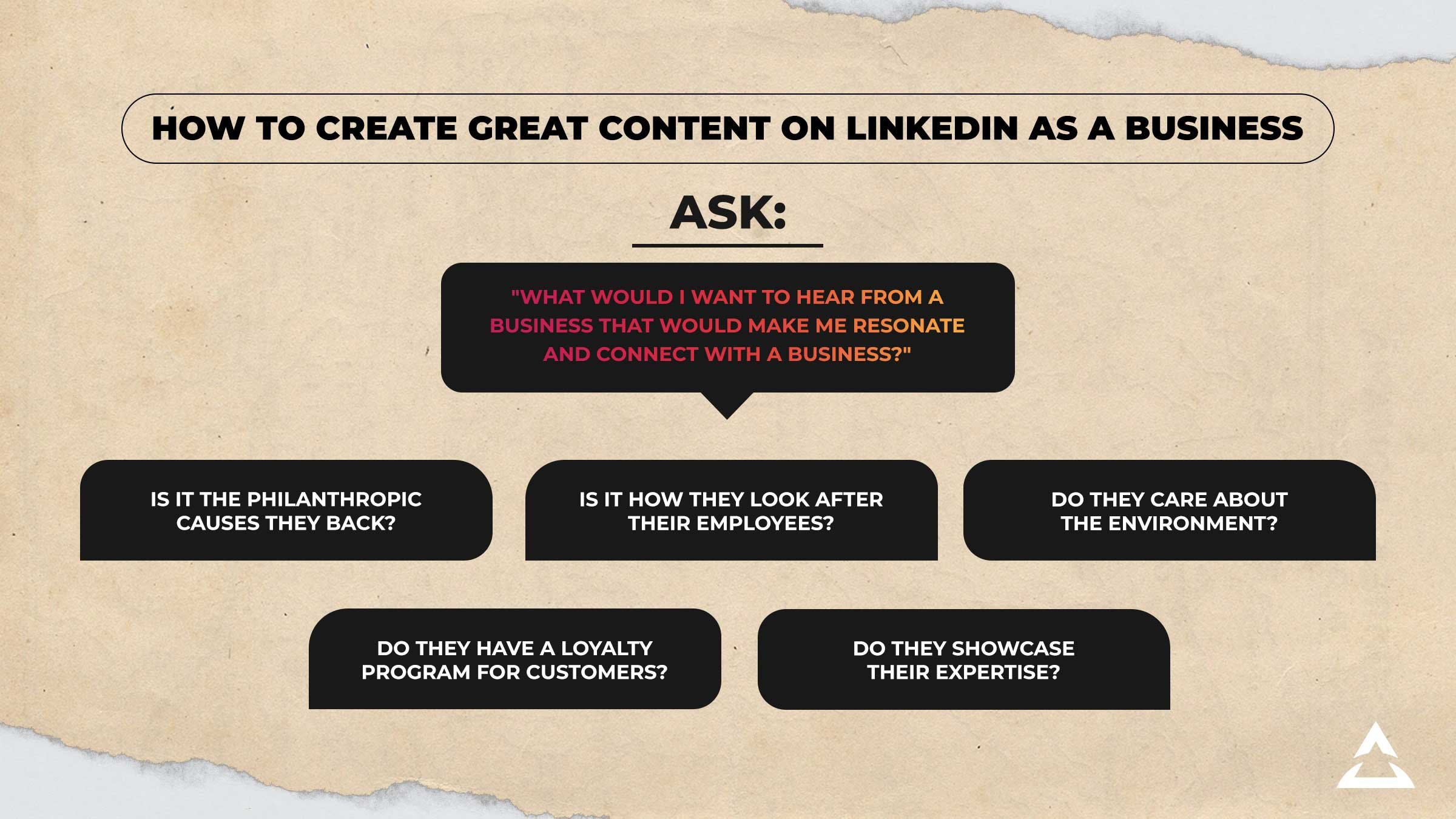
Think about what times professionals would visit LinkedIn. LinkedIn has one of the lower usage times compared to other social media platforms, so try to aim for only a few times a week maximum, and posting near the end of the working day or at lunchtime. However, a good thing to note is timing might not always be important as LinkedIn doesn't always prioritise 'newest' in the Feed but rather 'Top'.
Don't forget to connect with other people and their networks by commenting on other people's relevant posts with thought-leadership. This way the spread of your message can be truly vast.
The chat on Twitter can scroll past you at a hundred miles an hour especially with over 500 million tweets a day being sent.
With such high numbers and steady traffic, it is a good idea to tweet a few times a day. Change up the hashtags if you want and see if that gets you more traction. Remember the 280-word character limit and tiny URLs. Be economical with your posts. It can be harder to write less.
What you Tweet about is completely up to you. Some businesses will post funny things, giving their brand a bit more personality. Other businesses will only post updates and things like new features or press about themselves. Other businesses will comment on trending topics or all of the above. It depends on your brand and your brand voice.
YouTube
What are the most common things people search for when it comes to your industry, your product or service, the things that your brand stands for? Think “How-To” videos - this is one of the most dominant types of content on YouTube. People often search for guides or visual aids to what they’re doing. So keep that in mind. If you can help someone with a visual demonstration, that is content gold.
As YouTube is a searchable platform rather than discovery, you can post as much as you want, whenever you want. Just make sure your content is good and is searchable (practice good SEO). If you post a lot of rubbish you won’t get any results, no sales.
This is a good place to build your brand voice and equity up as well, with many companies posting about the behind-the-scenes of their company, company-branded videos such as "about us" styled videos, as well any press they may receive showcasing the good work they do.
TikTok
As TikTok is a growing platform, there are lots of opportunities for new trending content to be made, however, it is still limited to a 60-second maximum video. With such growing organic reach and targeted For You Pages, it's important to be consistent (as always) in when you post and what you post. Focus on brand awareness content that give people a sneak peek into your business and brand, what it's all about, and why people should purchase from you - such as your brand values, your personal story, etc.
It's all about authenticity on TikTok in showcasing the behind-the-scenes of business, of a personal brand, whatever it is. And the more you resonate with an audience, the higher chance you will have of connecting with those interested in your story, your values, your product or service.
Create a social media marketing calendar
Now that you know which platforms you should be posting on for your business, and what type of content you could be posting on those platforms, it's time to plan your organic content strategy. And this is one of the key things you need to do with your social media - have a plan. It is far too easy to get lost and overwhelmed with all the social media channels, what to post, when to post, content, videos without a plan.
Lucky for you, we have a FREE Social Media Marketing Planning Calendar just for you. This template is easy to use and will help you apply what you've learned here to make a planned and strategic approach, so you always know you're sending the right message to the right people, at the right time.
You can download the template for free by clicking on the link above.
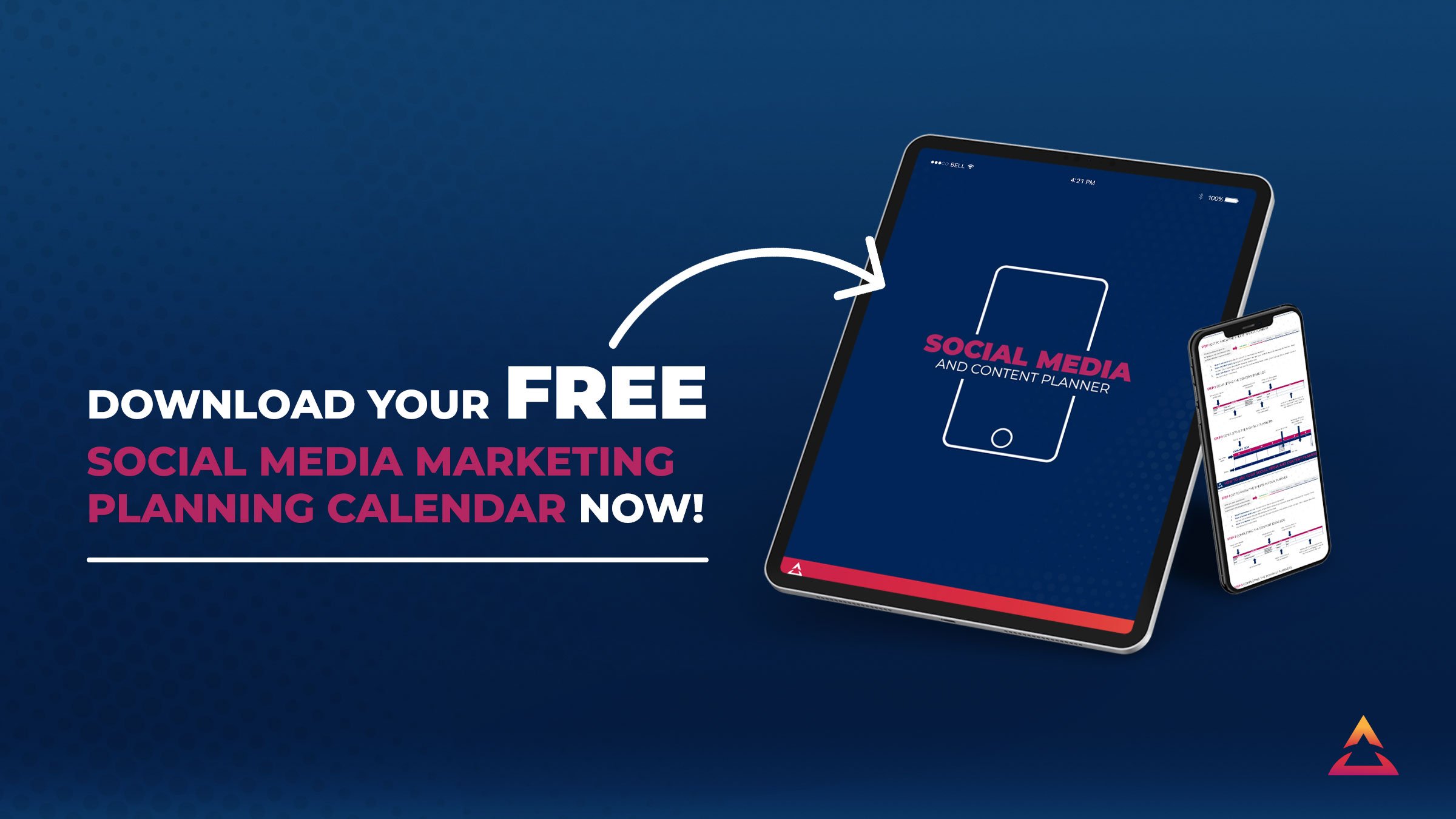 For the paid side of social media marketing, it can be difficult to plan out a content calendar the same way you would with organic socials. Instead, focus on your overall marketing strategy, goals, and campaigns and work around that.
For the paid side of social media marketing, it can be difficult to plan out a content calendar the same way you would with organic socials. Instead, focus on your overall marketing strategy, goals, and campaigns and work around that.
Let us help you with our short course, the Profitable Facebook Ads course, that covers the exact frameworks, strategies, principles and blueprints we teach our members to drive business growth through Facebook advertising. Taught by one ofo ur Vision Partners Heather Porter, she is 1 of 8 Facebook community trainers in Australia meaning she has the strategies taught by Facebook themselves shared directly with you in this short course today.
Key takeaways
It is inevitable that when you begin to market yourself and your business, social media will play a big hand. Knowing where your audience is online can help. Having a PLAN is also a big help. And knowing what to say, and how to say it, will work for you too.
We can help train you in marketing, including Social Media Marketing, and help you build and grow your business through our business coaching and training programs available for business owners of all shapes and sizes. If you're unsure of how you can best proceed with your marketing strategy, book a free discovery call with one of our Entrepreneur Development Managers today, and we can help you uncover where your best next steps are.
Related Posts
Join the movement.
Your Entourage journey starts here. Join Australia's largest community of over 500,000 business owners and entrepreneurs, and receive instant access to exclusive content and updates delivered straight to your inbox.

